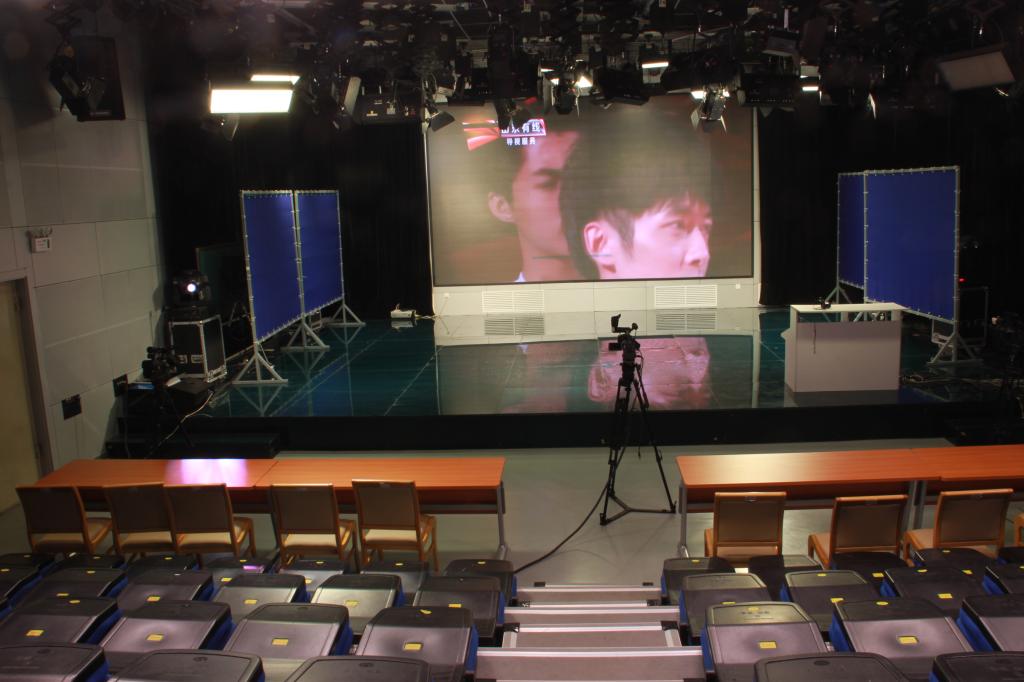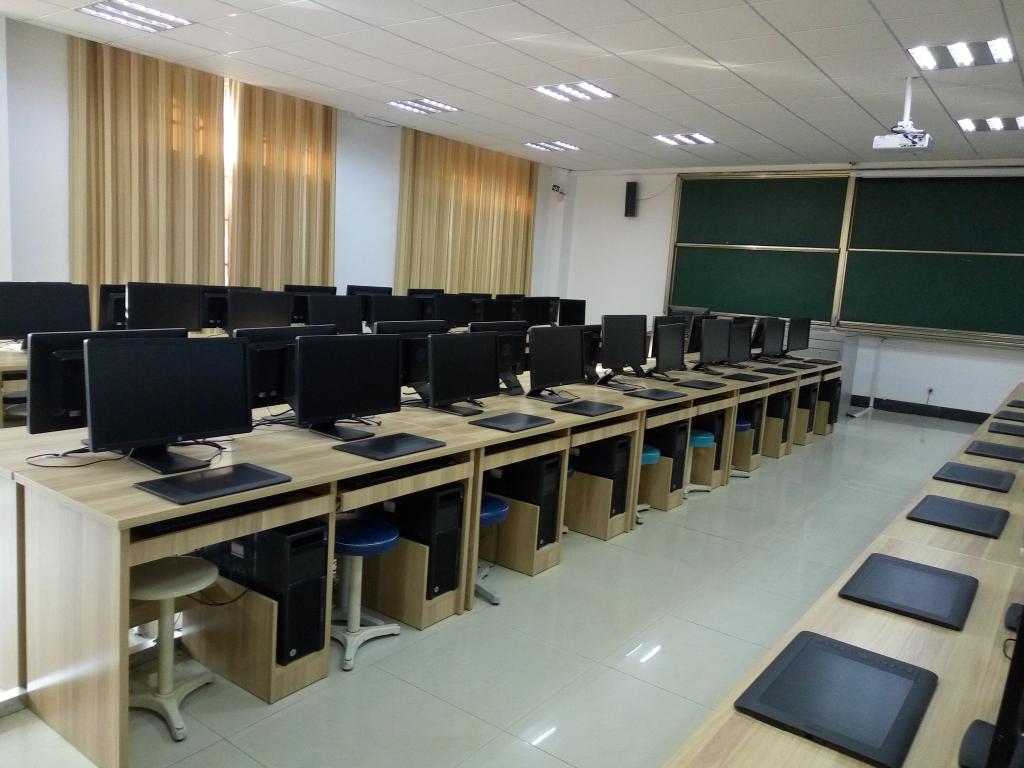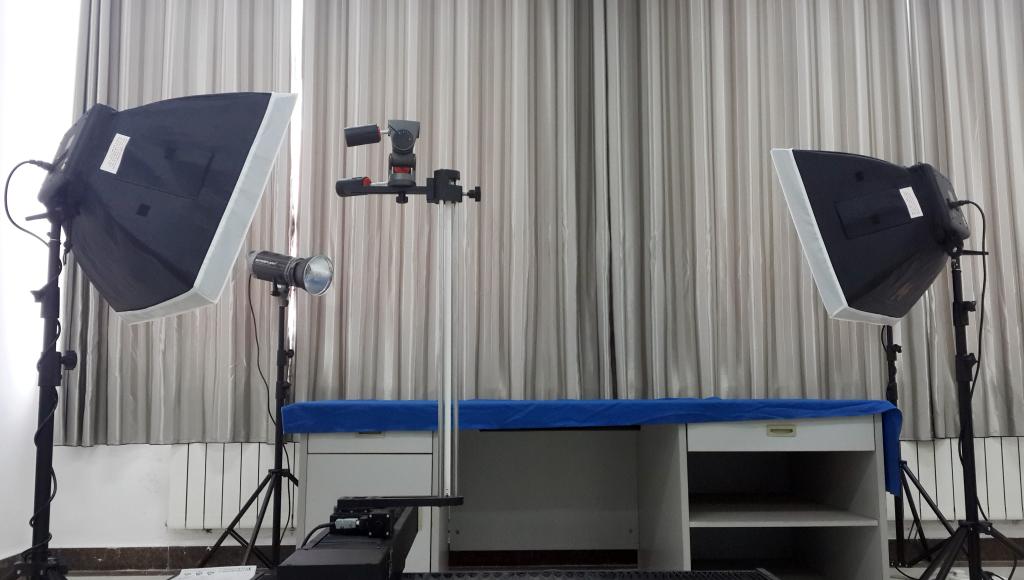Ⅰ.Introduction
The school of communication was founded in Qufu campus in 1994. In April, 2002, it was renamed the school of information technology and communication, and in September of the same year, it was transferred to Rizhao campus. In July 2014, it was renamed as the school of communication.
School of communication adheres to the "focused, distinctive, complementary advantages, mutual support" of the discipline construction, gives full play to the media discipline characteristic and the comprehensive advantages, realizes the education, journalism and communication, art and management the multidisciplinary crossing leap-forward development. It has five undergraduate majors: education technology, journalism, advertising, digital media art and digital publishing. The point for PhD in education technology has been authorized in 2018. The school has seven master degree in education technology, drama and film and television, library science, Ed.M (modern education technology), MFA (radio and television, film), library and information. It has four provincial quality courses and three school-level excellent courses, and the digital media and communication technology experimental teaching center is the provincial experimental teaching demonstration center in Shandong province. The school of communication in 2018 began to recruit students at public expenses. Education technology undergraduate thick foundation and skill talent cultivation system of achievement, for teaching achievement prizes at the prize of Shandong province in 2018. The school of communication is the modern education technology training base of Shandong province, and undertakes the continuing education training task of the modern education technology of primary and middle school teachers in the province. There are 1742 undergraduates and 256 postgraduate students in the school of communication now.
The school of communication has strong experimental teaching conditions for media majors. In September 2009 Experimental teaching center of digital media and communication technologies was approved for colleges and universities in Shandong province experimental teaching demonstration center, the center including a multimedia technology laboratory, a film and television technology laboratory and an animation lab, center laboratory are more than 5000 square meters, experiment equipment worth more than 28 million yuan. The studio office belonging to the center completed in May 2013, that covers an area of 240 square meters. The total cost of the equipment is more than 3 million. The studio uses the LED lighting system. Stage configured P6 full color LED screen with area of 21 square meters, which makes TV studio reach the requirements of standardization, modernization, meet needs of the film and television production courses experiment. In 2015, the new animation production laboratory set up five experimental sub-chambers, including digital animation, stop-motion animation and motion capture, and the level of instrument configuration is at the high-end level of the same kind of universities in China.
The school of communication has 56 teaching and administrative staff members, 52 full-time teachers, including 4 professors, 22 associate professors, 27 lecturers, 16 doctoral degree candidates and 35 master's degree holders. The school of communication has more than 30 doctoral supervisors and master supervisors, one of the provincial teaching masters of Shandong province and one of the School-level teaching master of Qufu normal university. In recent five years, the teachers take eight state-level scientific research projects, eight ministerial scientific research projects, 29 provincial scientific research projects, 6 provincial research projects, has 17 teaching and scientific research at the provincial level, over 700 core papers published articles.
The students have solid theoretical foundation and strong professional quality, and have strong social practice and practical working ability. In the past five years, the average graduates entrance examination rate is 40%, and students have won 53 national prizes and 247 provincial awards in national college students' mathematical modeling contest, national college students electronic design contest, national college students advertising art contest, micro film contest and other national competitions. Graduates are welcomed by the society and their job market is vast.
In the future, we will build the school strength with the "quality" as the foundation, build the school-running features with the "media" brand, make the media discipline bigger and stronger, and train modern media talents for the society.

massive television studio
Ii. Introduction of undergraduate major.
Education technology.
Education technology is a normal major, with a bachelor's degree in science, a doctorate and a master's degree, and a combination of multimedia and network technology and digital film and television technology. It trains talent who master modern education theory and modern information technology, can design, develop, applicate, evaluate teaching system and teaching media, can manage and maintain teaching resources and environment. Core courses of this major include Introduction to Education Technology, Learning Science and Education Technology, Data Structures, Java Language Program Designing, Computer Network Technology, Design and Development of Multimedia Resources, Network Education Application, Dynamic Website Development and Maintenance, Video Recording Technique, Mobile Application Development, etc. Graduates can undertake primary and secondary school information technology work, the general technology curriculum teaching work, work for education scientific research institutions, government departments, the digitalization construction of press and publication and other units, engaged in the design and development, management and training of digital media resources in the enterprise, etc.
2. The journalism
Journalism major is an undergraduate major in journalism and communication in the category of journalism and communication. Currently, there are two directions for radio and television news and newspapers and periodicals. This major cultivate talents of all-round development in the area who are along with the system of the press theory knowledge and skills, broad profound cultural and scientific knowledge, familiar with China's news, promotion policies and regulations. This major expect students can have engaged in the editor, reporter, broadcasting and hosting, videotape and management work in the press, publishing, and propaganda department. Core courses are Introduction to Journalism, News Editing, News Reporting and Writing, News Photography, News Commentary, Communication, News Laws and Regulations, and Ethics, History of Chinese Journalism, History of Foreign Journalism, Radio and Television Journalism, Media Operation and Management. The main employment units of graduates are news publishing system, newspaper and magazine system, advertising media system, broadcast television system and so on.
3.Digital media art.
Digital media art isn't a normal major and it has two directions: computer-animated, digital cinematic art. Digital media art profession trains talents with solid foundation of digital media technology and art theory foundation who grasp the digital technology in the field of film and television art, network multimedia application in the field of art theory, basic knowledge and skills, and access to system training of digital art. The main courses include introduction to digital media, introduction to art design, graphic design and color composition, sketch, photography technology and art, video recording technology and art, audio-visual language, non-linear editing and film special effects, digital video audio technology, digital image acquisition and processing, computer animation design and production, web art design, digital film and television creation, film and television directing, film and television art history, introduction to communication, etc. The graduates are mainly engaged in all kinds of digital media art and design, production and dissemination. The graduates' employment unit is the animation production company, the film and television production organization, the digital art design company, the advertising company, the digital entertainment industry field, the audio-visual publishing institutions and vocational colleges and other industries.
Advertising
Advertising is non-normal professional, and two directions of network advertisement and film advertisement are set up. It trains talents who has the basic theoretical knowledge, practical skills of advertising, relevant cultural and scientific knowledge and can be engaged in advertising business management, advertising planning, creative and design production, marketing planning, market investigation and analysis in the media advertising departments, advertising companies, market research and information consulting enterprises. Main courses include Introduction to Advertising, Communication, Advertising Planning and Creative, Advertising Media Research, Advertising Copy Writing, Advertising Business and Management, Corporate Image Planning, Advertising Art, Graphic Advertising Design, Marketing and Research, Advertising Photography, Television Advertising Production, Computer Graphic Design, Computer Three-dimensional Design, Online Advertising Production, etc. Graduates can work in advertising companies, press and publishing systems, radio and television systems, enterprise market research and planning departments, enterprises and product image planning departments.
5. Digital publishing
Digital publishing is a non-normal major, which is the undergraduate major in the category of journalism and communication in the category of literature. This professional culture trains students who both has a profound cultural background and is familiar with the law of digital publishing. They can adapt to the development of new technologies, new media and the diversified trend of mass culture communication in the information age. They have the basic ability and innovative spirit to analyze and solve practical problems in the operation and management of digital publishing, and can be involved in digital publishing, new media communication, digital media planning and production, and other cultural and creative industries related industries, such as creative and expression of digital content, multimedia information collection and editing, inter-media publishing and operation management. Main courses include Editing, General Outline of Communication and Digital Publishing, Digital Image Acquisition, Multimedia Information Synthesis, Digital Art Layouts Design, Digital Graphic Processing, Digital Animation, Digital Editing, Digital Publishing Technology and Application, Digital Media Publication, Digital Publishing, Marketing, Design and Manufacture of Digital Copyright Management, etc. The employment unit of graduates is the new media productions and publishing institutions, press and publication systems, cultural and creative departments and so on.

HP Workstation
Iii. Introduction to graduate students.
1. Education technology.
Education technology is a secondary discipline under education, which is a cross discipline of science and technology, which plays an important role in the development of education informationization, learning-type social construction, innovative country construction, and education modernization. In 2001, It started to cultivate graduates in the direction of education technology teaching theory of the university. In 2002, this major independently recruited education technology master graduate student. This major has set up four research directions: education application, modern remote education, information technology education, and digital resource development. The discipline construction team is strong, with 11 graduate tutors, 5 professors and 6 associate professors. This profession trains talents meeting the need of social development in our country, who develop morally, intellectually and physically, law-abiding, good conduct, style decent, and has social sense of responsibility and mission, with a pioneering and enterprising spirit, and has a solid theoretical basis of education technology. They master the information technology and can skillfully apply to education.
2.Library science
Library science is a discipline of library information and archives management. It is a discipline that studies the collection, organization, management and reader utilization of scientific literature, as well as the communication and dissemination of literature information. It involves the storage and retrieval technology of information, data mining technology, digital library integration technology, information security technology, etc. The library science of Qufu normal university has set up six research directions, including the basic theory of book information, the research of information consultation, the research of digital library, the information measurement and analysis, the construction and management of information resources and the research of knowledge management. Currently, there are 8 part-time master tutors in this subject, 6 professors and 2 associate professors. Since 2007, there have been 49 postgraduate students in this discipline, of which 1/4 have been admitted to the doctoral degree, and 3/4 graduates are employed in national provincial, municipal public libraries or university libraries. Based on the development of modern information society and the need of knowledge management, this major has cultivated talents getting a systematic theoretical knowledge of library science, mastering modern information technology, and having a strong ability to research and innovate. they are capable of all-round development of morality and intelligence, and can be qualified for high-level in information management and technical service of modern libraries, literature information centers and enterprises and institutions.
3.Drama and film and television.
Drama and film and television art reflect the comprehensive characteristics of time and space, vision and hearing, modeling and performance, science and art integration, and the humanistic tradition of the art spread of the subject, as well as the era of digital technology. In 2005, "film and TV art" education was awarded the title of "drama and film science" master degree of the first level. At present, it is mainly based on the literary and artistic attributes of drama, film and television, audio-visual arts and media, and is devoted to exploring the artistic principles and laws of drama and film, creative methods and techniques, cultural communication and media management. There are 11 teachers in this discipline, including 5 professors and 4 doctors. It has a fully functional TV program production center, advanced non-linear editing experiment center and a variety of professional teaching practice bases. Postgraduate education theory and practice are paid equal attention to. This discipline emphasizes on film and television art creation and the cultivation of practice ability. Graduates employment in all kinds of culture media and TV institutions. This discipline cultivates talents who has a solid foundation for drama, film and television, and a strong sense of creativity and innovation. They are expected to be able to independently engage in the research, teaching and application of drama and film and television science, and adapt to the all-round development of moral, intellectual, physical and American talents in the development of contemporary social drama film and television and media.
4. Modern education technology.
Modern education technology is one of the fields of education master degree. This field trains professional teachers and education teaching managers who has mastered the modern education theory, has strong education teaching practice and research ability, and is a full-time teacher and engaged in relevant work.
5. Book information
Books intelligence professional enrollments regard adapting to the development of social informatization and the shandong public cultural service system construction as the guide. Making full use of local historical and cultural resources, it fosters elites with solid books intelligence theory knowledge, practice ability and innovation ability who can do a competent job on books intelligence agencies and enterprises and departments.
6. Broadcast television
Radio and television is an area of master's degree in art, which dedicates to cultivate all-round talents who is oriented towards modernization, facing the world and facing the future and engage to broadcast television art creation. In order to meet the needs of socialist modernization and the development of China's radio and television industry, the master of art of this major will focus on cultivating high-level artistic talents. Such talents should have high artistic quality and creative practice ability, and can be engaged in the advanced specialized work of radio and television art creation, communication and related business.
7. The movie
The film is a field of master degree in art, which cultivates high-level, application-oriented art talents with systematic professional knowledge, high level creation and performance skills, and strong artistic understanding and expressiveness.

Order animation Laboratory
The School of Communication, Qufu Normal University
Contacts: Fangang Hu
Add: 80 Yantai Road, Rizhao, P.R.China 276826
Phone: + 86-633- 3980319/ 3980315
Fax: + 86-633- 3980316
E-mail: 940815380@qq.com


















 鲁公网安备 37088102000140号
鲁公网安备 37088102000140号